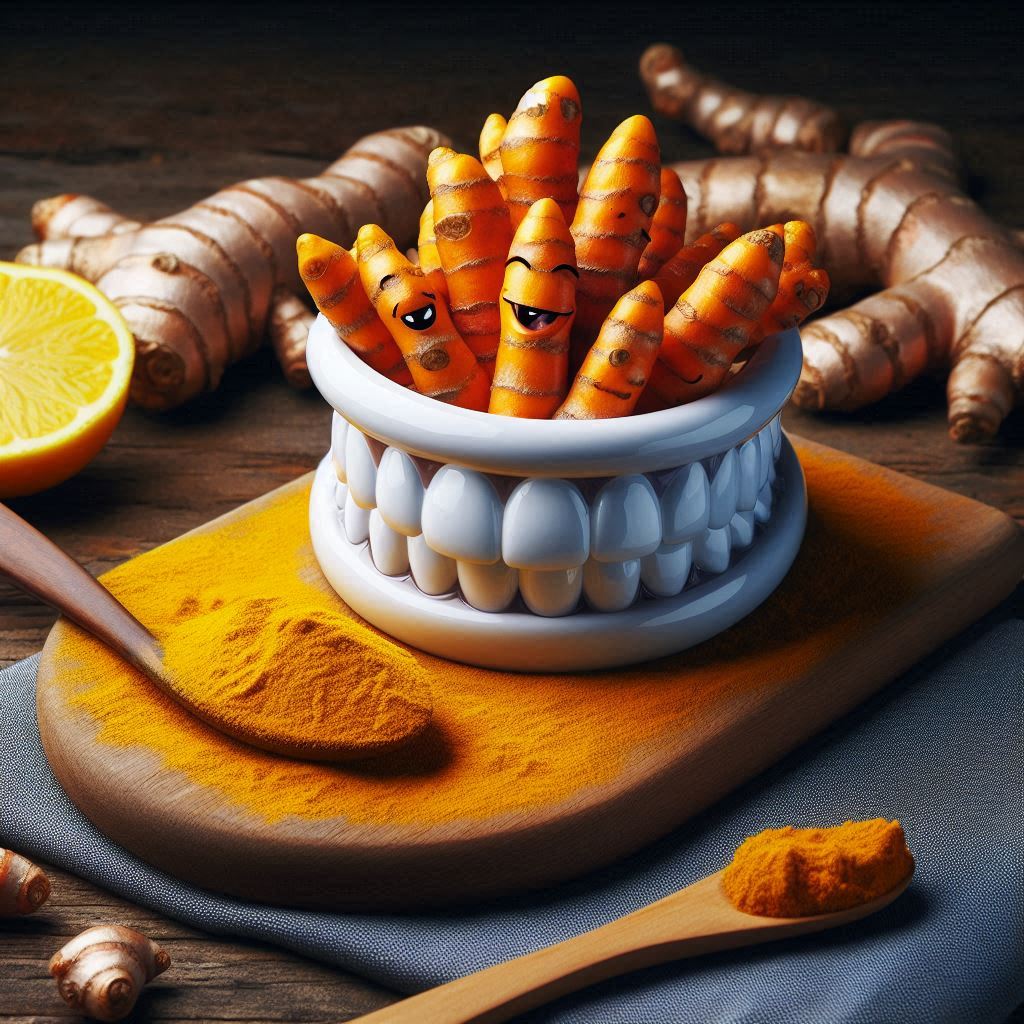
Imagine unlocking a brighter, whiter smile with a spice you already have in your kitchen. Turmeric, the vibrant golden ingredient known for flavoring curries and staining cutting boards, has a surprising secret: it can whiten your teeth. Yes, turmeric to whiten teeth is not just a quirky home remedy—it’s a natural, effective alternative to conventional whitening methods that’s gaining attention for its unique properties. Far from the harsh chemicals of bleaching strips or the expense of professional treatments, turmeric offers a gentle, affordable way to enhance your smile while supporting oral health.
In this article, we’ll uncover the unexpected teeth whitening power of turmeric and explore how this ancient spice can transform your dental care routine. From its science-backed benefits to practical how-to guides, we’ll cover everything you need to know to harness turmeric to whiten teeth. Whether you’re skeptical about its staining reputation or eager to try a natural solution, this guide will provide you with the knowledge and confidence to give it a shot. Let’s dive into the golden world of turmeric and see how it can brighten more than just your recipes.
1. What is Turmeric and How Does It Brighten Your Smile?
Turmeric is more than just a colorful spice—it’s a powerhouse derived from the root of the Curcuma longa plant, a member of the ginger family. Native to India and Southeast Asia, it’s been a cornerstone of traditional medicine for over 4,000 years, prized for its anti-inflammatory, antioxidant, and antimicrobial qualities. The magic lies in its active compound, curcumin, which gives turmeric its vivid hue and most of its health benefits, including its surprising role in teeth whitening.
So, how does a spice notorious for staining everything it touches help with turmeric to whiten teeth? It’s all about how turmeric interacts with your teeth and gums:
- Surface Stain Removal: Turmeric acts as a mild abrasive, gently scrubbing away extrinsic stains caused by coffee, tea, red wine, or tobacco. Unlike its reputation for staining fabrics, it doesn’t penetrate tooth enamel in the same way.
- Plaque Reduction: Its antimicrobial properties combat the bacteria responsible for plaque buildup, which can yellow teeth over time.
- Gum Health Boost: By reducing inflammation, turmeric supports healthier gums, creating a cleaner canvas that makes teeth appear brighter.
This combination of effects makes turmeric a unique player in the world of oral care. Rather than bleaching teeth like traditional whiteners, it polishes and protects them naturally, offering a holistic approach to a whiter smile.
2. The Science Behind Turmeric’s Whitening Magic
The idea of using turmeric to whiten teeth might sound like folklore, but there’s growing evidence to support its effectiveness. While turmeric has long been a staple in traditional oral care—think Ayurvedic tooth powders—modern science is starting to explain why it works.
Curcumin’s Multifaceted Benefits
Curcumin is the star of the show, and research highlights its impact on oral health:
- Antimicrobial Action: A 2015 study in the Journal of Clinical and Diagnostic Research showed that curcumin inhibits Streptococcus mutans, a key bacteria in plaque and cavity formation. Less plaque means fewer opportunities for stains to take hold.
- Anti-Inflammatory Power: Inflammation from gum diseases like gingivitis can make teeth look dull by exposing darker root areas. Curcumin’s ability to reduce swelling helps maintain a healthy gumline, as noted in a 2014 study in the Journal of Indian Society of Periodontology.
- Antioxidant Protection: Oxidative stress can weaken enamel and exacerbate discoloration. Turmeric’s antioxidants neutralize free radicals, protecting your teeth’s natural shine.
Evidence from Studies
While large-scale clinical trials on turmeric’s whitening effects are still limited, smaller studies offer promising insights. A 2012 study in the Journal of Natural Science, Biology, and Medicine tested turmeric as a natural abrasive and found it effectively reduced surface stains without damaging enamel—a common drawback of harsher whiteners like peroxide. Another 2019 review in Phytotherapy Research highlighted turmeric’s potential as a safe alternative for oral hygiene, noting its stain-fighting and bacteria-killing abilities.
Turmeric doesn’t bleach teeth internally like chemical agents, but its surface-level action makes it ideal for gradual, gentle whitening. Combined with its oral health perks, it’s a compelling option for those wary of aggressive treatments.
3. How to Use Turmeric for Teeth Whitening: Your DIY Guide
Ready to try turmeric to whiten teeth? It’s easy to incorporate into your routine with a few simple methods. Below are two popular approaches—plus tips to make them work for you.
Turmeric Whitening Paste
This is the most common way to harness turmeric’s whitening power.
Ingredients:
- 1 teaspoon turmeric powder (organic, if possible)
- 1 teaspoon coconut oil (for texture and added antibacterial benefits)
- Optional: 2-3 drops of peppermint essential oil (for a fresher taste)
Steps:
- In a small bowl, mix turmeric and coconut oil until you get a smooth paste.
- Add peppermint oil if you’d like a minty kick.
- Scoop a small amount onto a soft-bristled toothbrush.
- Brush gently in circular motions for 1-2 minutes, focusing on stained areas.
- Spit out the paste and rinse thoroughly with warm water.
- Brush again with your regular toothpaste to remove any lingering yellow residue.
Turmeric Mouth Rinse
For a less abrasive option, try this rinse.
Ingredients:
- ½ teaspoon turmeric powder
- 1 cup warm water
Steps:
- Stir turmeric into the water until mostly dissolved (it won’t fully dissolve, which is fine).
- Swish the mixture in your mouth for 30-60 seconds, coating your teeth.
- Spit it out and rinse with plain water to clear any residue.
Pro Tips for Success
- Frequency: Use either method 2-3 times a week. Overdoing it could irritate gums or wear enamel.
- Stain Prevention: Turmeric can stain sinks or towels—brush over a sink you can wipe down, and consider using an old toothbrush.
- Consistency: Results build over weeks, not days. Stick with it for at least a month to see a difference.
These methods are simple, affordable, and let you tap into turmeric to whiten teeth without fancy equipment or costly products.
4. Beyond Whitening: Turmeric’s Oral Health Perks
While turmeric to whiten teeth is the headline, its benefits extend far beyond aesthetics. Here’s how this golden spice supports your mouth as a whole:
1. Soothes Inflamed Gums
Gum inflammation, whether from gingivitis or brushing too hard, can make your smile look less vibrant. Turmeric’s anti-inflammatory properties calm redness and swelling, promoting a healthier gumline that frames whiter teeth.
2. Banishes Bad Breath
Halitosis often stems from bacteria lurking in your mouth. Turmeric’s antimicrobial action tackles these culprits, leaving your breath fresher—especially when used as a rinse.
3. Prevents Plaque and Cavities
By reducing bacterial growth, turmeric cuts down on plaque, the sticky film that dulls teeth and leads to decay. Cleaner teeth naturally look brighter and stay healthier.
4. Strengthens Enamel Naturally
Unlike abrasive whiteners that can weaken enamel, turmeric’s gentle polishing action—paired with its antioxidants—helps maintain your teeth’s protective layer, reducing sensitivity over time.
5. Budget-Friendly and Chemical-Free
At pennies per use, turmeric beats the cost of whitening kits or dental visits. Plus, it’s free of synthetic additives, appealing to anyone prioritizing natural wellness.
These perks make turmeric a multitasker in your oral care arsenal, whitening teeth while keeping your mouth in top shape.
5. Potential Risks and How to Avoid Them
Turmeric is safe for most, but using it for teeth whitening comes with a few caveats. Here’s what to watch out for—and how to sidestep issues.
1. Temporary Yellowing
Turmeric’s bright color can leave a faint yellow tint on teeth if not rinsed well. Fix: Rinse thoroughly and follow with regular toothpaste to lift any residue.
2. Gum Sensitivity
Its abrasive nature might irritate sensitive gums if overused. Fix: Limit use to 2-3 times weekly, and stop if you feel discomfort.
3. Allergic Reactions
Rarely, some people react to turmeric with itching or swelling. Fix: Test a small amount on your skin first; discontinue if you notice anything unusual and see a doctor.
4. Staining Surroundings
Turmeric loves to stain fabrics and surfaces. Fix: Use it over a sink, wear an old shirt, and clean spills immediately with soap.
5. Not a Deep Stain Solution
It won’t touch intrinsic stains (deep within teeth) like bleaching does. Fix: Pair it with professional care if you need dramatic whitening.
Talk to your dentist before starting, especially if you have fillings, crowns, or gum issues. Used wisely, turmeric’s risks are minimal compared to its rewards.
6. Turmeric vs. Other Whitening Options: A Showdown
How does turmeric to whiten teeth compare to mainstream methods? Let’s break it down.
Turmeric vs. Whitening Toothpastes
- Pros: Turmeric is natural and multitasking; toothpastes often rely on abrasives like silica without added health benefits.
- Cons: Toothpastes may work faster but can be harsher on enamel.
Turmeric vs. Bleaching Strips
- Pros: Turmeric avoids sensitivity from peroxide; strips can whiten deeper stains quicker.
- Cons: Strips cost more and may irritate gums.
Turmeric vs. Dental Office Treatments
- Pros: Turmeric is DIY and cheap; professional whitening offers instant, dramatic results.
- Cons: Office visits can run $500+, while turmeric takes weeks.
Turmeric vs. Activated Charcoal
- Pros: Turmeric adds anti-inflammatory benefits; charcoal’s just an abrasive.
- Cons: Charcoal might be messier and less studied for safety.
Turmeric shines as a slow-but-steady, natural choice. It’s perfect if you value affordability and oral health over speed.
Conclusion: Shine Bright with Turmeric
Turmeric’s unexpected teeth whitening power proves that sometimes the best solutions come from nature. This golden spice doesn’t just tackle surface stains—it fights bacteria, soothes gums, and freshens breath, all while being kind to your wallet and your teeth. From the science of curcumin to simple DIY recipes, turmeric to whiten teeth offers a compelling case for swapping out harsh chemicals for something gentler and greener.
Why not give it a try? Mix up a paste, rinse with intention, and watch your smile brighten over time. Share your results with friends—or in the comments below—and let’s spread the word about this golden gem. Ready for a natural glow? Turmeric’s waiting.






